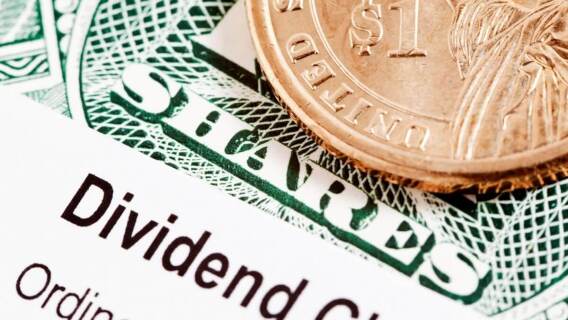Nearly all 30 stocks in the Dow Jones Industrial Average pay dividends, but not all of them are exceptionally high dividend yields. Fourteen of the 30 stocks in the Dow yield 2% or more, but because of the Dow’s selectivity, it can be a great place to turn for yield if you’re seeking Dividend Aristocrats (stocks that have raised their dividends at least 25 years in a row) or high-dividend, blue-chip stocks. With that in mind, what are the highest-paying dividend stocks in the Dow today?
The 10 Highest Paying Dividend Stocks in the Dow
1. Verizon (VZ)
2. Chevron (CVX)
3. Merck (MRK)
4. Amgen (AMGN)
5. Coca-Cola (KO)
6. Procter & Gamble (PG)
7. Johnson & Johnson (JNJ)
8. UnitedHealth Group (UNH)
9. Nike (NKE)
10. McDonald’s (MCD)
Like the index itself, the highest-paying dividend stocks in the Dow are well-established, high-quality American companies. Many are over 100 years old. For some of them, however, their best days are behind them. Some have very high dividend payout ratios that show they’re returning most of their cash to shareholders at this point—rather than reinvesting in their business.
Below, I take a closer look at each of the highest-paying dividend stocks in the Dow and separate the dogs from the dividend champs.
[text_ad]
1. Verizon (VZ)
Dividend Yield 7.0%
Telecoms typically pay high dividends, and the highest dividend yield in the Dow almost always belongs to Verizon. Verizon is one of the top four U.S. wireless carriers but faces stiff competition from AT&T (T) and T-Mobile (which just posted its best customer growth ever). All the telecoms have spent recent years lowering prices and sweetening plans to lure customers, which has resulted in good deals for consumers but has cut into corporate revenues and earnings. Verizon’s sales initially peaked in 2015, and it saw lower revenues in 2016-2017. But top-line growth swung higher in 2018, and after the 2020 debacle, the top line is once again in the ascendant.
For its part, Verizon is investing heavily in forward-looking ventures, including the “Internet of Things” and digital content. While economic uncertainty persists going forward, it should be kept in mind that VZ has a tendency to outperform other Dow 30 components in periods of economic weakness, thanks largely to its healthy subscription-based business. In the Great Recession of 2008-2009, for instance, VZ experienced a price drop of only 33% compared with a far more devastating 50% drop for the broad market.
2. Chevron (CVX)
Dividend Yield 4.5%
Chevron is one of the world’s largest oil companies, with energy exploration, production, refining, trading and transport operations that circle the globe. Founded in 1879, Chevron has paid dividends since 1970.
Like the rest of the energy sector, Chevron’s stock tanked in early 2020 but has since recovered. That said, shares have been rangebound for the last three years.
Chevron has a steady record of dividend payments despite crises in the energy sector, most recently increasing its dividend 5% coming into 2025. Although the stock’s dividend payout ratio has popped over 100% several times, CVX is currently on the Dividend Aristocrats list.
The stock is choppy at times and has a tendency to surge and crash with oil prices. But should crude rally, CVX is a worthwhile choice for investors who want some exposure to the leaner and meaner energy sector.
3. Merck (MRK)
Dividend Yield 3.9%
Merck, originally founded as the American arm of the German Merck Group in 1891, is a global healthcare company that operates in two segments: Pharmaceutical and Animal Health.
The company has multiple drugs in production with “blockbuster” status (more than $1 billion in annual revenue), most notably Keytruda and Januvia, which are used in cancer immunotherapy and diabetes treatment, respectively.
The company has a strong track record of raising or maintaining its dividend over the last 25 years, most recently raising the dividend from $0.77 a share to $0.81 in December 2024.
As for the stock, MRK has fallen 17.3% in the last year and is up only 10.0% over the last five.
4. Amgen (AMGN)
Dividend Yield 3.2%
Originally founded in 1980, Amgen is an American biopharmaceutical company that has expanded its presence to 100 countries worldwide. It specializes in cardiovascular disease, oncology, bone health, neuroscience, nephrology and inflammation and specifically targets diseases for which there are no or limited viable alternative treatments.
In the company’s fiscal 2024, revenues came in at a record-high $33.4 billion, but acquisitions were a drag on earnings, which fell to $7.56 per share from $12.49 the year before. Like most biopharmas, the company is constantly playing defense against generics, but Amgen’s robust pipeline offers it a sizeable moat.
As for the dividend, Amgen recently raised it by nearly 6% from $2.25 to $2.38 per share quarterly. Couple the yield with Amgen’s longer-term performance (up 28.2% in the last five years with relative stability) and its ability to weather the storm in the event of an economic downturn, and you get an attractive dividend stock.
5. Coca-Cola (KO)
Dividend Yield 3.0%
Coca-Cola, the ubiquitous beverage company that needs no introduction, is the largest non-alcoholic beverage company in the world with a portfolio of soft drinks, energy drinks, juices and beverages sold worldwide comprising over 200 individual brands. While the stock is something of a slow grower, its products are also resilient, which tends to help them hold up in times of trouble.
Analysts are projecting mid-single-digit growth for the next five years, although the company beat earnings expectations in its most recent quarter.
As for the dividend, Coca-Cola increased its quarterly dividend from $0.46 per share to $0.48.5 in 2024 and again to $0.51 in the beginning of 2025. Coca-Cola has a history of raising dividends at the beginning of the year, so the minor hike should come as no surprise.
6. Procter & Gamble (PG)
Dividend Yield 2.9%
Procter & Gamble is an American multinational consumer goods company that’s been doing business since 1837 and has been a Dow Jones constituent since 1932.
The brand portfolio is a who’s who list of products that you can likely find all over your home. From Pampers, Charmin, and Bounty to Tide, Crest, and Gillette, if you use it every day, odds are good that it’s made by Procter & Gamble.
The company has been steadily raising its dividend for the last two decades and, most recently, paid a quarterly dividend of a hair above $1.05 per share.
As for the stock, it’s down 11.4% in the last year and up only 2.1% in the last five (which is underperforming the Dow itself, which is up 66.2% in the last five years).
7. Johnson & Johnson (JNJ)
Dividend Yield 2.8%
Johnson & Johnson, once the world’s largest healthcare company, has fully transitioned away from consumer health products (like Tylenol, Neutrogena, Listerine, or Band-Aids - basically anything in your medicine cabinet) to medical tech and pharmaceutical products with their spin-off of Kenvue (KVUE) in 2023.
Although reshaped by the divestiture, the company is a portfolio stalwart for investors and has been a slow but steady grower over the long haul. Shares are up 31.8% over the last five years (but without much in the way of chop or volatility).
The company is guiding for low-to-mid-single-digit growth this year, which should not be surprising given the company’s defensive nature.
8. UnitedHealth Group (UNH)
Dividend Yield 2.7%
UnitedHealth Group is America’s largest insurer and one of the world’s largest private health insurers. It’s a goliath with $371 billion in annual revenues that serves 148 million members in all 50 states and 33 countries.
The group provides services at just about every facet of the health care process under four different segments: UnitedHealthcare, Optum Health, Optum Insight, and Optum Rx.
It’s also a company that’s been upended by turmoil in the last year with the high-profile murder of a company CEO, backlash against insurers over claim denials, and, more recently, an investigation by the Department of Justice concerning its Medicare billing practices.
Those negative headlines are largely responsible for UNH’s inclusion on this list, as the yield has risen due to the share price shedding 40.8% in the last year and 5.0% in the last five.
As for the dividend, the company raised its most recent by 5%, from $2.10 per share to $2.21, but given the tumult at the company, it’s likely small comfort to shareholders.
9. Nike (NKE)
Dividend Yield 2.6%
Nike isn’t a name you’d typically associate with a high dividend yield, but a significant stretch of underperformance has pushed the dividend yield up substantially.
This formerly high-growth, high-profile sportswear company manufactures some of the most recognizable sneaker brands on the planet, including the Air Jordan brand of basketball shoes and offerings from wholly owned subsidiary Converse.
Nike currently offers a dividend yield of 2.6%, paying $0.40/share quarterly, which is up from $0.37/share this time last year. The company also boasts 23 consecutive years of dividend growth, putting it on the threshold of achieving Dividend Aristocrat status.
But the elephant in the room (and the reason it’s on this list) is the share price. NKE has fallen 52.3% in the last five years and is lower by 20.3% in the last year alone. In fact, shares are trading at the same level they were exactly a decade ago, and with tariffs raising input prices and consumers feeling pinched, investors shouldn’t consider the stock for its dividend alone.
10. McDonald’s (MCD)
Yield 2.5%
Once the largest fast food chain on the planet, with over 41,000 locations, McDonald’s was dethroned this year by Chinese bubble tea and ice cream company Mixue Bingcheng.
Even so, the U.S.-dominating McDonald’s manages to sell an estimated 75 hamburgers per second (or about 6.5 million each day) alongside its iconic French Fries, best-tasting soft drinks (they have a special agreement with Coke to ensure McDonald’s fountain sodas are the cream of the crop), and other offerings.
The company boasts 50 years of consecutive dividend increases and just upped the payout on its upcoming (quarterly) December dividend from $1.77/share to $1.86/share.
As for the stock, it’s a bit of a slow mover, up 2.1% in the last year and 38.1% in the last five. But, like the burgers themselves, MCD is a timeless classic for a reason.
[author_ad]
*This post is periodically updated to reflect market conditions.

